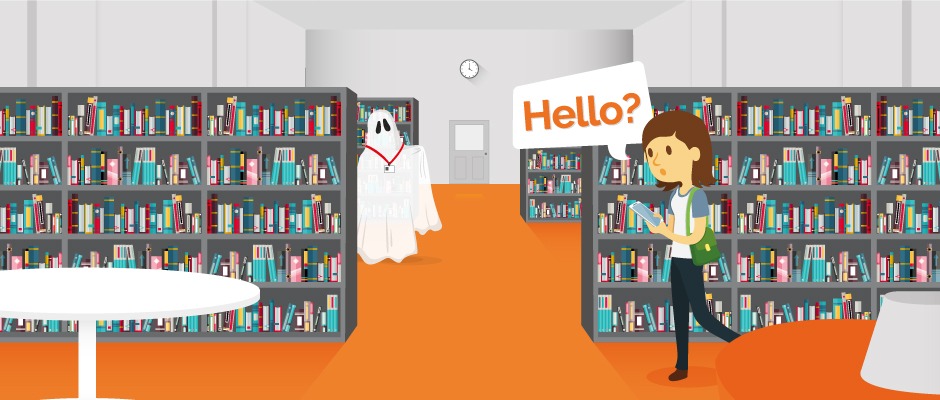Students spend a lot of time in the university library, but is the experience what it should be? Alterline Research Director Ben Hickman explains how university libraries can help student experience in a world where tuition fees may soon be linked to the Teaching Excellence Framework.
Customers. It’s not a word often used to describe university students. But rises in tuition fees have seen students become more serious about their “return on investment” and universities have had to change the way they think. Further changes could see tuition fees linked to whether a university is rated as bronze, silver or gold, with libraries being assessed as a resource against the learning environment criteria. This means the role the university library plays in supporting teaching and learning has never been more important.
In fact, there is perhaps no other area of a university that has such a high level of footfall and interaction with students as the library. And that means it is an important element in keeping student satisfaction high.
Students who responded to the 2017 Times Higher Education survey gave libraries an overall rating score of 6.1 out of a possible 7. This means that students are more satisfied with libraries and their opening hours than with any other attribute in the survey. Our experience would certainly back this up: students do love and value their libraries – but there’s still a lot to be done to ensure that libraries continue to have an impact as the demands on the service increase.
Since 2013, we have worked with a number of leading university libraries to help them improve their services to students, and what we have found is fascinating and shows the pressures that they’re under first-hand.
“There were people last year sitting in the toilets because it was so busy”
Enough space and the right facilities continue to be among the biggest problems libraries face. We hear a lot about students having to sit and study in areas that are less than ideal. Thankfully, the toilet example isn’t common but lack of desk space, computers and other facilities is.
“People work differently now”
With the increase in coffee shop culture, the way we study and work has changed. Students can sit in Costa on a Sunday afternoon with skinny lattes, access to free wi-fi and toilets metres away. Yet university libraries are still wrangling with long-standing rules such as food and drink being consumed only in designated areas. Students will – and do – order takeaways to be delivered directly to the library!
Buildings have often been adapted through the years rather than being purpose-built with the modern student in mind. Toilets aren’t necessarily on every floor, plug sockets are regularly outstripped by demand and there are frequent wi-fi black spots – all of which represent ongoing challenges. Students want the library to fit with the way they work.
“The problem is that books aren’t on the shelves”
Our research tells us that students have problems finding books. It’s not only that they don’t understand the cataloguing systems or don’t know where to look. It’s often that books are in high demand, especially on popular courses where there are simply not enough copies. Students can often return them late, hide them to ensure they’re available when needed, or take them to use while studying in the library.
“Library staff are like ghosts”
We often hear that staff are hard to find and that they’re not easily identifiable. Students tell us that they want face-to-face contact with staff. Introducing a uniform and allowing staff to actively approach students rather than sitting behind a help desk may seem simple, but can make a huge difference.
“Only one person can use it at a time”
Providing a seamless digital journey is a challenge for many institutions. Licensing problems can mean that there is a limit to how many students can access an e-book simultaneously, which is counter-intuitive to the way students understand digital resources. Students also tell us about how they have to log in to multiple websites and online programmes to access digital content. Whilst navigating between them, they are often logged out or their session expires, meaning that searching catalogues and databases can be a frustrating task – leaving students turning to Google first.
Students don’t want unnecessary hurdles in their way, and will quickly go elsewhere if they can get better, faster services that are easier to use. Like every other part of the university, the culture of libraries must be genuinely customer-focused. The only way to do this is to understand more about the students.
In our research, we live and breathe the student journey, immersing ourselves in their world, whether that’s visiting the library at 2am, living with students for a week or asking them to take ‘love’ and ‘hate’ photos of their library life. With a strong mix of traditional and innovative methods we, provide evidence that helps to change the way the libraries think about students.
Ultimately, this means universities making a serious commitment to putting evidence about who students are, what their lives are like, and what their needs are at the heart of decisions. Universities must use this knowledge to create spaces, products and services that add real value to students’ lives. They mustn’t stop at physical and digital changes either – it’s about changing the culture amongst staff to ensure they embrace the changes. Staff need to feel free to innovate, take risks and make the odd mistake along the way.
If you want to find out more or chat about how research could help your library, please contact Ben Hickman, Research Director.











